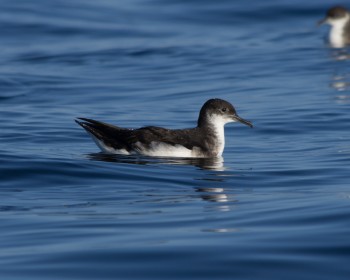The Albatross and Petrel Agreement has produced a number of conservation guideline documents that are available on its web site (click here). Subjects covered to date include biosecurity, eradication of introduced vertebrates, translocations of albatrosses and petrels, conducting censuses, and removing hooks from birds brought aboard fishing vessels.
A new conservation guideline document has recently been added to the series, written by Graham Parker and Kalinka Rexer-Huber (Parker Conservation, New Zealand), which advises on designing surveys for burrowing petrels.
The guidelines’ summary follows:
“Robust population estimates are needed for conservation management of burrowing petrel populations. Estimates of population size for burrowing petrels are often obtained by extrapolation of burrow surveys to a population- or island-wide scale. However, extrapolation will also extrapolate bias or error, giving rise to potentially large error bounds reflecting imprecise estimates of population size. This hinders species risk assessment and limits the ability to detect trends in population size over time. We review methods for estimating the breeding population size of burrowing petrels by extrapolation from surveys, focusing in particular on the error associated with population estimates of the larger Procellaria petrels. Sources of error in extrapolation of survey data are divided into five key areas: (1) uncertainty of burrow contents (2) timing, (3) availability bias, (4) burrow detection probability, and (5) observer bias. The review highlights that there is no single-best method for minimising error levels in population estimates. Rather, the most accurate and precise studies are those designed according to the specifics of the study resources, species and site, and we discuss a range of the factors that are important to consider. The timing of burrow occupancy checks can help avoid assumptions about what proportion of breeding birds has not yet laid or has already failed. If sampling sites are not representative, or if some part of a petrel’s burrowing range is not accessible, this availability bias can affect extrapolation. Extrapolation errors occur when the area sampled is not representative of the area that the samples are extrapolated to. Burrow detection rates can also affect the accuracy of extrapolation, so the assumption that every burrow in the sampled area was detected should be checked. To produce an accurate and precise population estimate from burrow counts, it is important to determine burrow contents, and to distinguish between breeding and non-breeding birds in burrows. If a proportion of occupants is missed, further error is introduced to the population estimate, so it can be valuable to check occupant detection probability. Whether planar map area or true surface area is used for extrapolation can be a further source of error. Observers may differ in their ability to detect burrows or burrow contents and this observer bias should be tested for. Several key points are relevant to all studies: the need for a good pilot study to minimise error sources in the main survey; the need for sufficient time to cover enough ground, while including contingency for weather; and the need to document burrowing petrel survey methods in enough depth to be repeatable. For reference, we summarise the key problems associated with extrapolation of burrowing petrel surveys, and the implications if these error sources are not addressed (Table 2).”
ACAP’s Seabird Bycatch and Population and Conservation Status Working Groups that met this month in La Serena, Chile heard of plans for further ACAP Conservation Guidelines, as well as of the updating of existing ones.
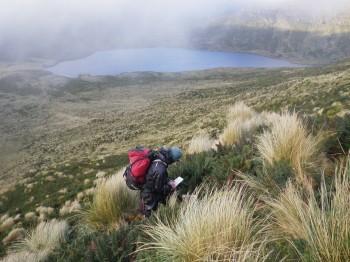
Graham Parker surveys Grey Petrels on Campbell Island
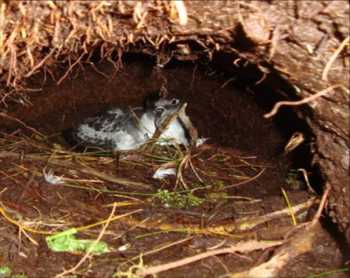
Grey Petrel in its burrow on Gough Island, photograph by Kalinka Rexer-Huber
Reference:
Parker, G. & Rexer-Huber, K. 2016. Guidelines for designing burrowing petrel surveys to improve population estimate precision. ACAP Conservation Guidelines Series. 19 pp.
John Cooper, ACAP Information Officer, 07 May 2016
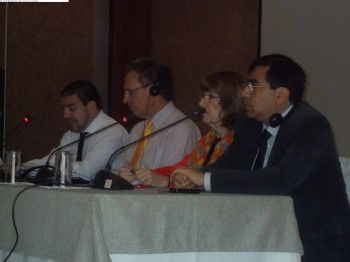

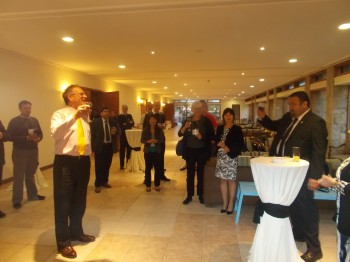

 English
English  Français
Français  Español
Español 


